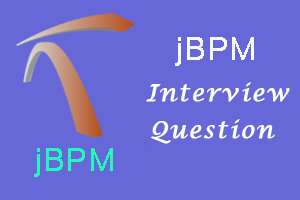
jBPM Interview QuestionsA list of top frequently asked jBPM interview questions and answers are given below: 1) What is BPM?BPM stands for Business Process Management. It is a set of activities which follows the number of steps in a specific order to fulfill the organizational goals. The order of these goals is depicted using a flowchart. It involves:
2) What is jBPM?jBPM stands for Java Business Process Management. It is a flexible Business Process Management (BPM) Suite which is written in the Java language. It filled the gap between the business analysts and the developers. It is light-weight and fully open-source in nature. It allows us to create, deploy, execute and monitor business processes throughout their life cycle. It is distributed under the Apache license and was released under the ASL by the JBoss Company. Traditional BPM process engines focused only non-technical people who had insufficient functionality. For more detail:jBPM Introduction 3) What does jBPM do?JBPM is a business management suite which is used to model our business goals. It describes the number of steps that need to be executed to achieve the business goal and the order, using a flowchart. It improves the visibility and agility of our business logic. It can be understood by the business users and the developers both. It is easier to monitor the business processes. The core of jBPM is a light-weight, extensible workflow engine written in pure Java. It allows us to execute business processes using the latest BPMN 2.0 specification. It can be run in any Java environment and can be easily embedded in our application or as a service. 4) What are the advantages of jBPM?jBPM allows us to use different computational model for business process and rule. This model is based on a knowledge-oriented approach. jBPM application is not process-oriented or rules-oriented, but the end users can use different strategies to represent their business logic. the advantages of jBPM are:
5) What are the features of jBPM?The core features of jBPM are: 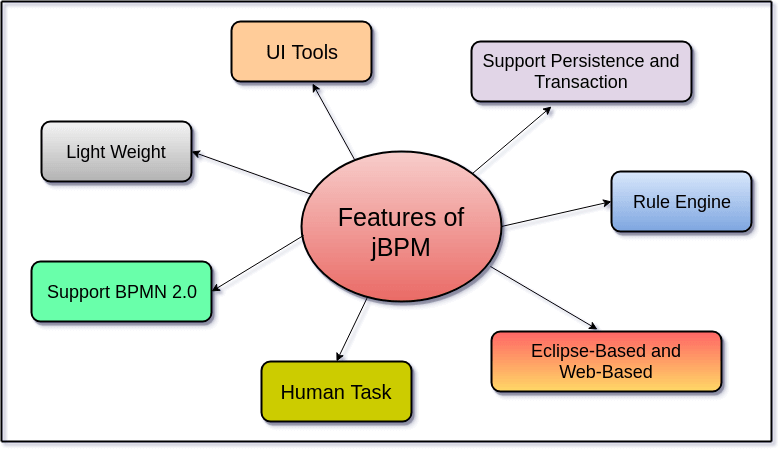
To know more: jBPM Features 6) What is the difference between traditional BPM and jBPM?A list of differences between traditional BPM and jBPM:
7) What is Drools?Drools is a Business Rules Management System (BRMS) solution. It provides an Eclipse IDE plugin for core development. Using these frameworks, users define rules which specify what action needs to be done when a particular condition is met. In projects, it's usually used to determine Business Rules which are composed of facts and conditional statements. It also provides a web authoring and rules management application (Drools Workbench) and full runtime support for Decision Model and Notation (DMN) models. 8) Drools Vs. jBPM (What is the difference between Drools and jBPM?)
9) What is a Rule Engine?
10) What are the advantages of Rule engine?Advantages of Rule Engines are: Greater Flexibility: Keeping our rules into a Knowledgebase helps to adapt our decisions when they are changing quickly. Easier to Grasp: Rules can be understood easily as compared to procedural code so, they can be effectively used to fills the gap between business analysts and developers. Reduced Complexity: The rules engine can handle much better increasing complexity because they use a consistent representation of business rules. Reusability: By keeping rules in one place leads to greater reusability of our business rules. 11) What do you mean by KIE?KIE stands for Knowledge Is Everything. KIE approach is used to create a Knowledge Base and a Knowledge Session. A Knowledge Base is a repository of all the relevant process definitions. It is an interface that manages a set of rules and processes. Its primary task is to help us always to look up the processes definition whenever necessary. Rules are contained inside the package org.drools.KnowledgeBase. 12) Differentiate between Stateless and Stateful knowledge session.
13) What is JPA?
For more detail: JPA API 14) What is JTA?
For more detail visit JTA API. 15) What are the components of jBPM?The list of the jBPM components are:
For more detail go to jBPM Component 16) Define Services in jBPM.The core Services of jBPM are: 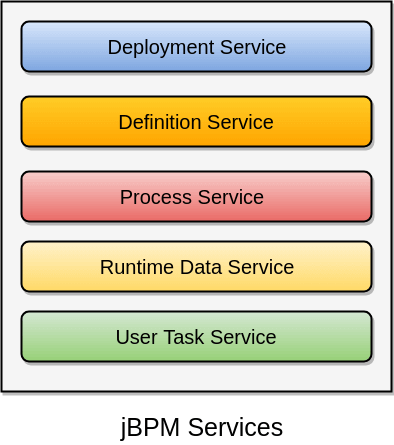
For more detail go to jBPM Services 17) What is RuntimeManager?Runtime Manager manages Runtime Engines. It is built with Kie Session and Task Service to deliver executable environments for processes and user's tasks. It will always be closed whenever it is not needed anymore to free up resources it allocated. Each Runtime Managers has a unique id so there cannot be used two Runtime Managers with the same id active at the same time in the same system. Runtime Managers includes:
18) Explain Human Task Services in jBPM.Human tasks are similar to any other external service. jBPM supports different types of human task nodes inside processes for modeling this interaction with human users. Human task node allows process designers to define the task properties which the human actors need to execute. Human task service implementation is based on the WS-HumanTask specification. It manages the life cycle of the tasks and stores the state of all the tasks, task lists, etc. We need three components to use human tasks inside the processes. They are- 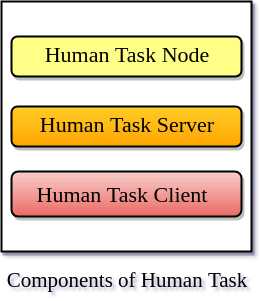
For more detail go to Human Task 19) Explain Remote API Services?The jBPM platform provides many remote API services. It provides developers with an improved level of flexibility in designing solutions that require jBPM integration. This remote API opens up some possibilities with a flexible, open architecture, to satisfy and to quickly react to changing application requirements. JBPM works with the following remote service APIs - 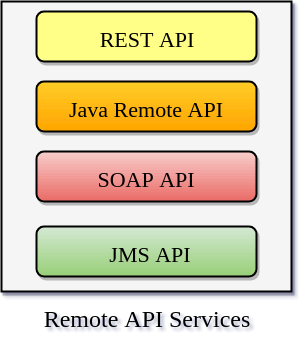
For more detail go to: Remote Services 20) Differentiate embedded sub process and reusable sub process.Embedded Sub ProcessEmbedded SubProcess is also known as Inline Subprocess. It is a subprocess within a Process and cannot be reused outside of the process. Embedded Subprocess can access all the process variables where it is defined & also we can add some additional variables to be accessible within that Embedded Subprocess container. Embedded SubProcess can also access the group flow elements together to make the business process more readable. Subprocesses are contained as part of the parent subprocess. Reusable Sub ProcessReusable Subprocess is an independent process. It cannot access the parent process variables directly. We need to map the in & out values through Subprocess properties whenever we want to use it. Reusable Subprocesses create business processes that can be called from other business processes. Reusable processes have the following characteristics:
|
You may also like:
- Java Interview Questions
- SQL Interview Questions
- Python Interview Questions
- JavaScript Interview Questions
- Angular Interview Questions
- Selenium Interview Questions
- Spring Boot Interview Questions
- HR Interview Questions
- C Programming Interview Questions
- C++ Interview Questions
- Data Structure Interview Questions
- DBMS Interview Questions
- HTML Interview Questions
- IAS Interview Questions
- Manual Testing Interview Questions
- OOPs Interview Questions
- .Net Interview Questions
- C# Interview Questions
- ReactJS Interview Questions
- Networking Interview Questions
- PHP Interview Questions
- CSS Interview Questions
- Node.js Interview Questions
- Spring Interview Questions
- Hibernate Interview Questions
- AWS Interview Questions
- Accounting Interview Questions







